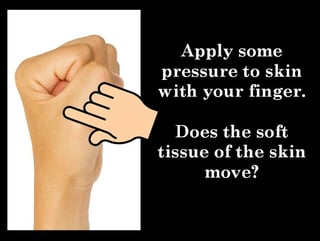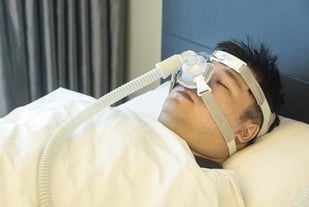
The first time I heard the word “titration" (way, way back when) my mind’s eye conjured an image of functions in a dimly lit, dank chemistry laboratory located in the basement somewhere in the bowels of a research center. Or, even more vivid, the oceanic crew of the ship Calypso did in an episode of “The Undersea World of Jacques Cousteau.” The sound of the word titration made me wonder what possible marine diversity discovery Cousteau would reveal during THIS episode. I was a newcomer to sleep disorders medicine. When I saw the word used in association with the acronym for continuous positive airway pressure (CPAP), I hoped no one would have to be submerged in water! After all, the patients that need to use CPAP have sleep apnea -- no additional challenges needed.
The term titration is defined as continuously measuring and adjusting the balance of a drug dosage or a physiological function. Match the dose or function with the proper response, and you have an appropriate situation for a prescription of CPAP therapy. Just ask yourself-- Would you just walk into a clothing store to buy yourself a pair of pants by just grabbing a pair, or without reading the size label? It’s no different in the sleep laboratory concerning sleep apnea.
Improving quality of life via CPAP therapy, well-fitting mask interface, as well as a successful titration of CPAP are all key goals where sleep apnea patients are concerned. Sometimes technical or medical words can be daunting until they are defined and we learn what is involved. In the case of the word titration, being associated with the acronym CPAP, means certain settings of the equipment are adjusted until the periods of sleep apnea have disappeared during the study.
CPAP titration: impact on sleep apnea "events"
To consider the subject of CPAP titration and sleep apnea, first we should examine the upper airway physiology or function of a human being while awake and also while asleep. This function of the upper airway is impaired in the sleeping person with apnea. If we think of this in terms of how, when people are alert and awake, they "know" to keep the upper airway functional, in other words- keep the airway open. Once the relaxation of the slumbered person takes place, the upper airway muscles.
What is going on during CPAP titration study?
To avoid confusion about what actually happens to the body when CPAP is applied, first let's try an exercise that likens itself to the reaction in the upper airway when CPAP is initiated. Make a fist with your hand. The tissue on the part of the hand depicted is loose and pliable a seen with the touch of the finger. Very little finger pressure was necessary to move that tissue out of the way. Well, the same goes for that "invisible splint" of pressure that is applied to the back of your throat (part of the upper airway). See how the tissue stays in place with CPAP pressure?
CPAP titration and adjusting CPAP pressure
You will likely not be aware likely when the pressure is being increased. CPAP pressure is measured in centimeters of water pressure, or "cm H2O." It is administered slowly and at very small incremental increases. If the pressure is not enough to keep the airway open, the technical staff will be able to see this on the monitoring equipment, and then make another pressure increase. This will repeat as needed the apneic events disappear. Pressure is also adjusted this way to make snoring go away.

The sounds of silence have a certain look
So your sleep apnea has been abolished due to the monitoring equipment used for the CPAP titration study. Most of these studies will incorporate monitoring sensors at the chest/thoracic area, and the abdominal/stomach region. Small sensors attached to cloth bands that are placed across the chest and abdomen reach around the body like belts. The signals from the sensors will cause a flattened tracing on the monitoring equipment if apneic events are present. When a person is not breathing, there will be no chest or abdominal excursions shown. These are the times the pressures are increased.
A sensor under the nose monitors the presence or lack of breathing with much the same signal as the thoracic and abdominal readings. The difference is, the nasal reading is shown due to temperature. Sometimes this piece of equipment is called a thermistor, or thermocouple. The cool air if inspiration (inhaling) and the warm air of exhalation will show the technician a positive and negative wave. When that wave flattens, an cessration of breathing is what is going on. Again, the pressure will be increased until all these occurances disappear.
All this equipment attached: How can a person get up to use the restroom?
Dont worry about having to get up to use the restroom during your CPAP titration. A technician is always present to make a very simple disconnect and send you off to the restroom. Certainly, an uncomfortable, full bladder isn’t going to let you experience a great CPAP titration study since you probably cannot sleep!
After a CPAP titration study, your doctor has an optimal pressure reading to consider. Now he can prescribe the appropriate pressure just for you. You are on your way to a better night's sleep and a great improvements on health and quality of life.












Leave a comment